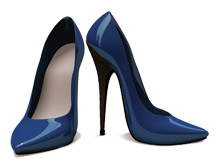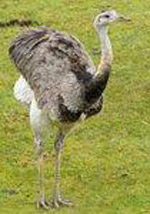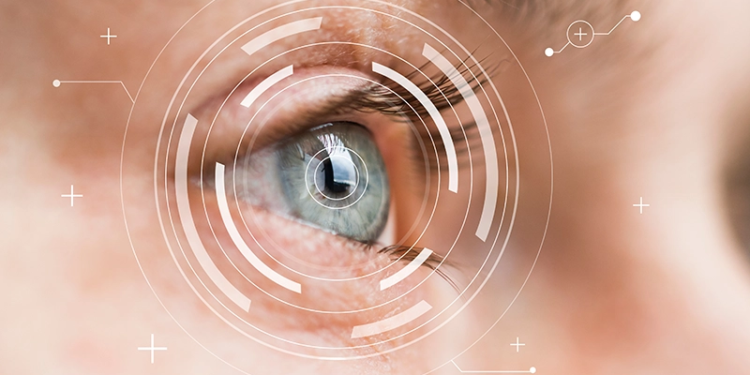A study published in the May issue of the Journal of the Royal Society Interface concludes that women wearing high heels and ostriches exemplify the most economical gait for slow, bipedal ambulation and can serve as a model to design a transfemoral prosthetic leg that is better suited for walking.

Walking involves a repeated process referred to by scientists as “crash, vault, push”-landing (“crashing”) on the heel, vaulting over the stationary leg, and then pushing off with the toes. This is the most mechanically economical way of walking and, as shown in this study, despite biomechanical differences, the ground force exerted is the same for humans walking normally, women walking in high heels, and ostriches.

However, when scientists model how the leg moves, they tend to simplify the movement and view the leg as a stick with a block on top (the body), which moves in an inverted pendulum motion. In this simplified model, the shape of the human foot does not make sense. In reality, the human leg is more complicated than this; it contains muscles that probably evolved out of a tension between being optimized for walking and being more efficient at running.
Further, the shape of the human foot means that when the foot is flat on the ground, all the force goes through the ankles, allowing the muscles to support the weight of the body while being largely unloaded during the “vault” stage. When muscles weight bear, they tire easily even if they are doing no work.
The researchers believe this finding might have implications for the design of better prosthetic limbs for individuals with transfemoral amputations and for the legs of humanoid robots. “Less humanlike feet would allow the benefits of more natural human walking, in which steps are taken relatively quickly allowing relatively short steps and high walking speeds,” the study concludes.
According to study author Jim Usherwood, PhD, a Wellcome Trust Senior Research Fellow at the Royal Veterinary College, London, UK, “If you want to make a good prosthetic foot but don’t care what it looks like, you should put the motor-in this case, the ankle-as far up the leg as possible, where it can provide the power without making the feet heavy and hard to swing backwards and forwards. For above-knee amputees, a typical prosthetic leg that is very humanlike is heavy and hard to move around. It’s much better to have an ostrich foot at the end of a very lightweight leg.”




